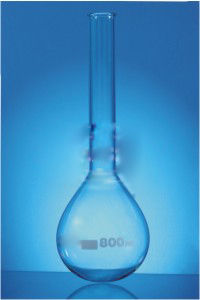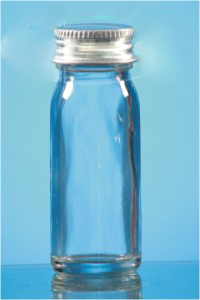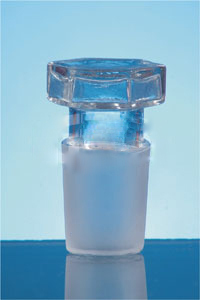Liebig Condensers
Liebig Condensers Specification
- Control Type
- Manual
- Features
- Straight inner tube with outer coolant jacket, ground glass joints for secure connections, chemical and thermal resistance
- Glass Type
- Borosilicate
- Temperature Resistance
- Up to 250C
- Shape
- Cylindrical
- Type
- Liebig Condenser
- Dimension (L*W*H)
- Approx. 30-40 cm length x 2-2.5 cm diameter (various sizes available)
- Equipment Type
- Laboratory Condenser
- Equipment Materials
- Borosilicate Glass
- Material
- Borosilicate Glass
- Application
- Laboratory use for distillation and condensation
About Liebig Condensers
| Liebig Condensers | |||||||||||||||||||||||||||||||||||||||||||||||||||||||||||||
|
Superior Cooling Performance
The Liebig Condenser features a straight inner tube surrounded by a water-jacketed outer sleeve. This design maximizes the exposure of vapor to the cooling surface, ensuring rapid and efficient condensation. Customizable hose connectors allow for versatile water flow control, enhancing the condensers functionality in various laboratory distillation setups.
Durable and Chemical-Resistant Material
Crafted from premium borosilicate glass, the Liebig Condenser is extremely resistant to chemicals and thermal shocks. Its polished ground glass joints promote airtight connections, and the robust structure ensures longevity, making it suitable for repeated autoclavation and reuse without compromising on performance or safety.
Compliance and Versatility
Each condenser is manufactured following ISO certified protocols, guaranteeing high standards and consistent quality. Available in multiple lengths and diameters, and suitable for both horizontal and angled usage, these condensers cater to a wide array of laboratory needs, supporting research and industrial applications across India.
FAQs of Liebig Condensers:
Q: How is the Liebig Condenser cleaned and maintained for repeated use?
A: The Liebig Condenser is fully autoclavable, allowing for effective sterilization and cleaning between uses. Its borosilicate glass construction resists chemical corrosion and thermal stress, making it easy to rinse, brush, and sterilize without degrading the material integrity.Q: What types of laboratory applications is this condenser best suited for?
A: This condenser is ideal for distillation and condensation processes in chemistry and research laboratories. Its efficient water-jacketed cooling is suitable for vapor-phase condensations, solvent recovery, and various organic synthesis tasks.Q: When should I opt for customized inlet/outlet sizes on the Liebig Condenser?
A: Customized hose connectors are beneficial when you require specific water flow rates or need to integrate the condenser with unique laboratory setups. Custom sizes ensure compatibility with your existing water supply and equipment.Q: Where can the Liebig Condenser be positioned during operation?
A: The design allows for both horizontal and angled positioning, providing flexibility to adapt to different lab apparatus configurations and optimize condensate collection based on your experimental needs.Q: What are the main benefits of using a borosilicate glass Liebig Condenser?
A: Borosilicate glass offers superior thermal and chemical resistance, withstanding temperatures up to 250C. This ensures reliable performance even with aggressive chemicals and repeated heating/cooling cycles.Q: How does the water-jacketed outer tube enhance condenser performance?
A: The water-jacketed outer tube ensures uniform cooling along the length of the condenser, rapidly condensing vapors and minimizing product loss. This design also maintains efficient heat exchange throughout the distillation process.

Price:
- 50
- 100
- 200
- 250
- 500
- 1000+
More Products in LABORATORY GLASSWARE Category
Flasks, Kjeldhal Round Bottom Long Neck
Temperature Resistance : High heat resistance
Shape : Round bottom long neck
Glass Type : Borosilicate glass
Material : Glass
Features : Durable heatresistant
Application : Laboratory use Kjeldahl analysis
Mac-Cartney Bottles
Temperature Resistance : Up to 121C (Autoclavable)
Shape : Cylinder with screw cap
Glass Type : Clear Borosilicate Glass
Material : Borosilicate Glass
Features : Autoclavable, Leakproof, Chemical Resistant, Clear Graduation Markings
Application : Microbiology, Laboratory Sampling, Sterility Testing
Stopper: Hollow with Flat bottom
Temperature Resistance : Up to 250C
Shape : Cylindrical with flat bottom, hollow
Glass Type : Borosilicate
Material : Borosilicate Glass
Features : Chemically resistant, reusable, transparent, easy to clean
Application : Laboratory sealing, chemical experiments, sample containment
Spare Extractor for Soxhlet Apparatus
Temperature Resistance : Up to 250C (typical for laboratory borosilicate glass)
Shape : Cylindrical
Glass Type : Highquality Borosilicate Glass
Material : Borosilicate Glass
Features : Ideal fit for existing Soxhlet setup, Excellent chemical resistance, Thermal stability, Transparent for process observation
Application : Used as a replacement part for Soxhlet extraction apparatus in laboratories for solvent extraction processes
GST : 06ACOPS0805K1ZD
|
 |
SINGHLA SCIENTIFIC INDUSTRIES
All Rights Reserved.(Terms of Use) Developed and Managed by Infocom Network Private Limited. |


 Send Inquiry
Send Inquiry





